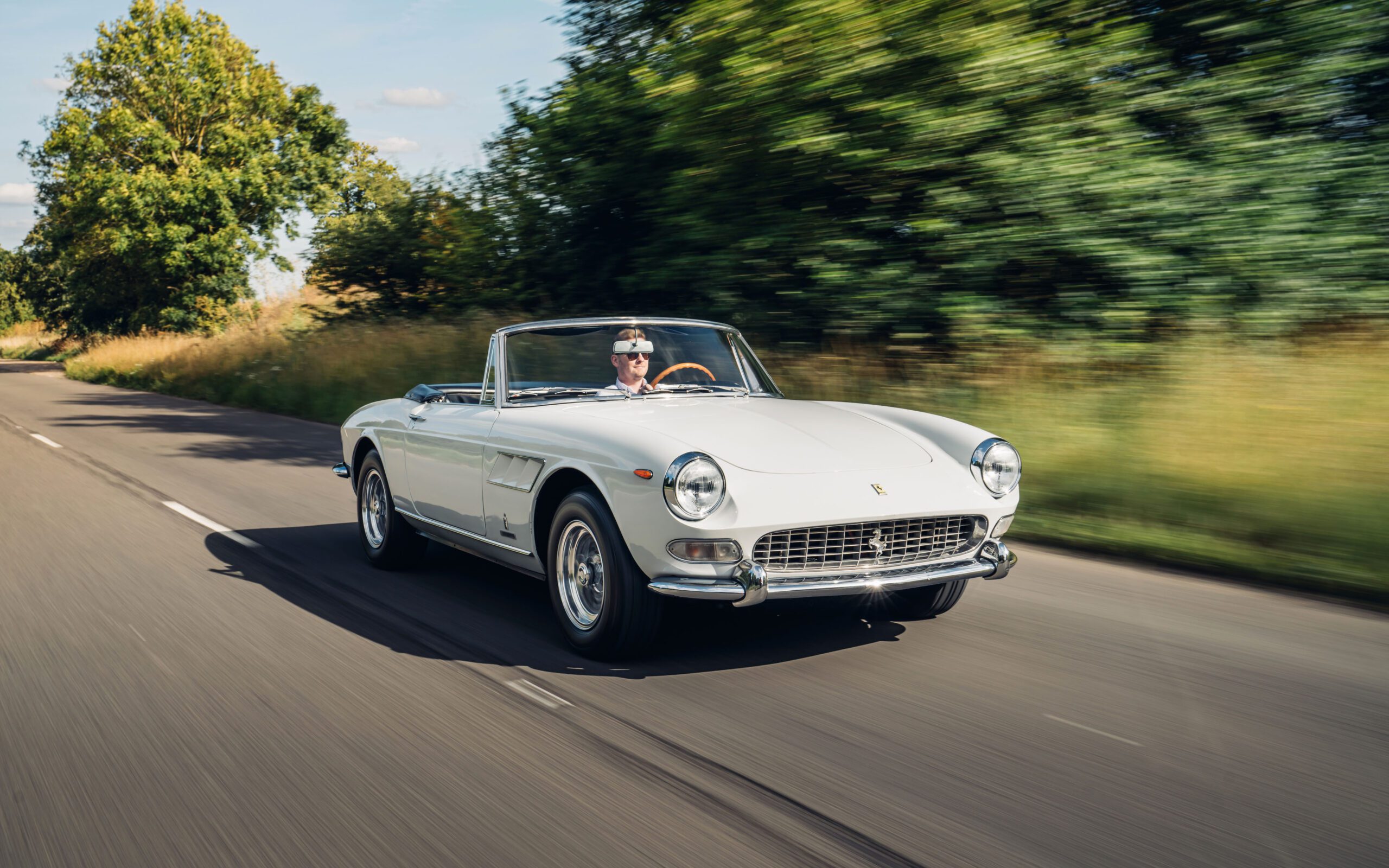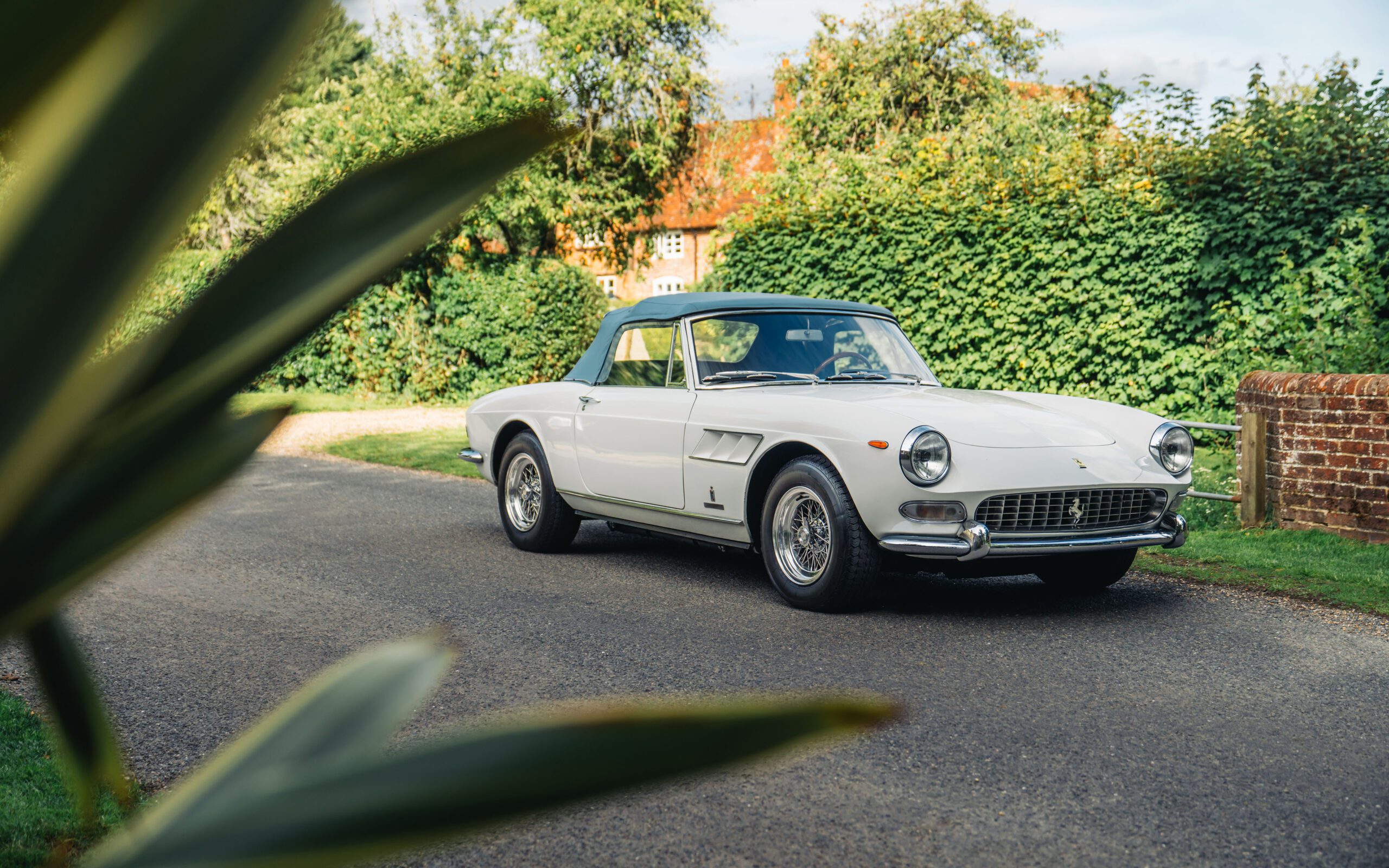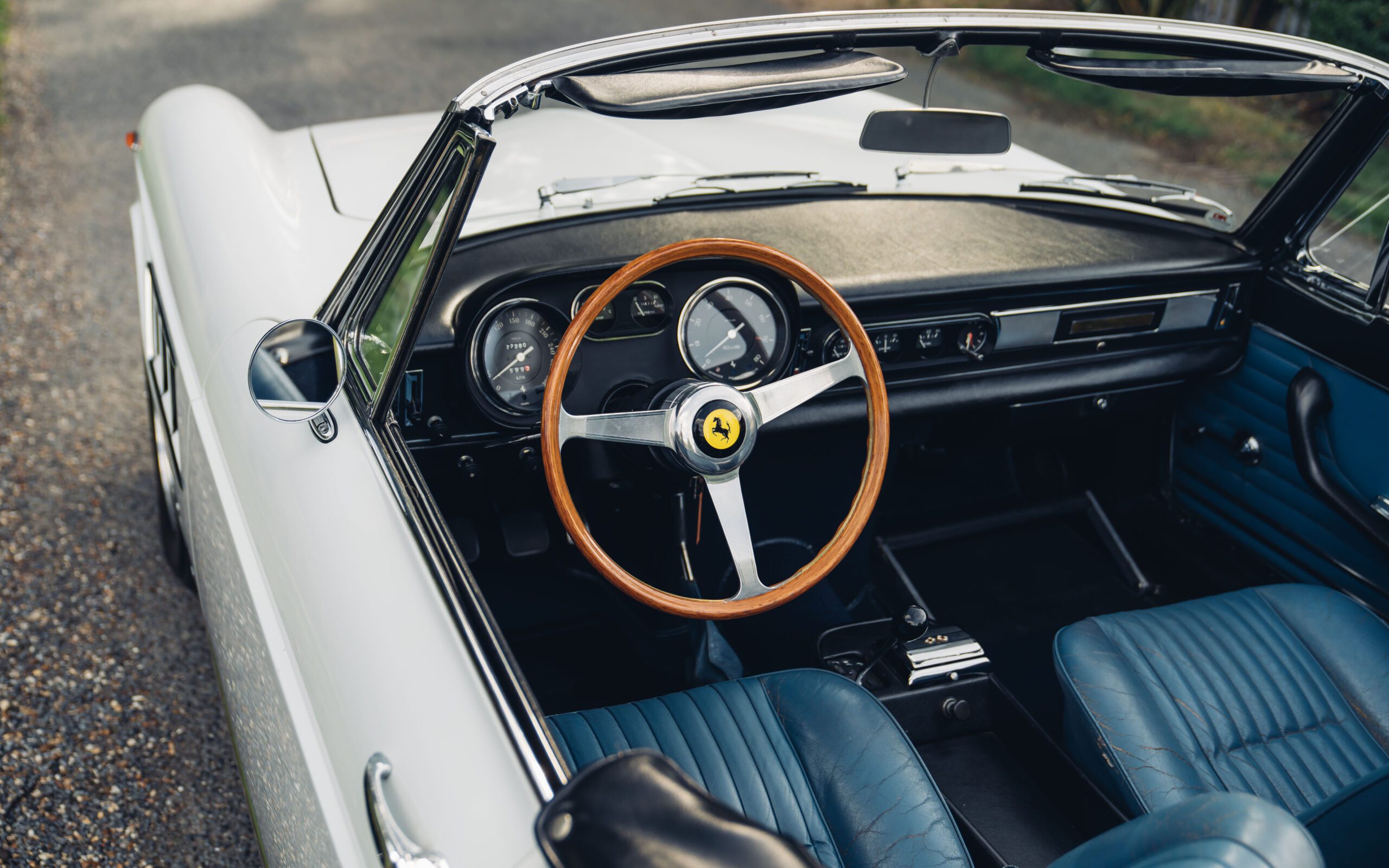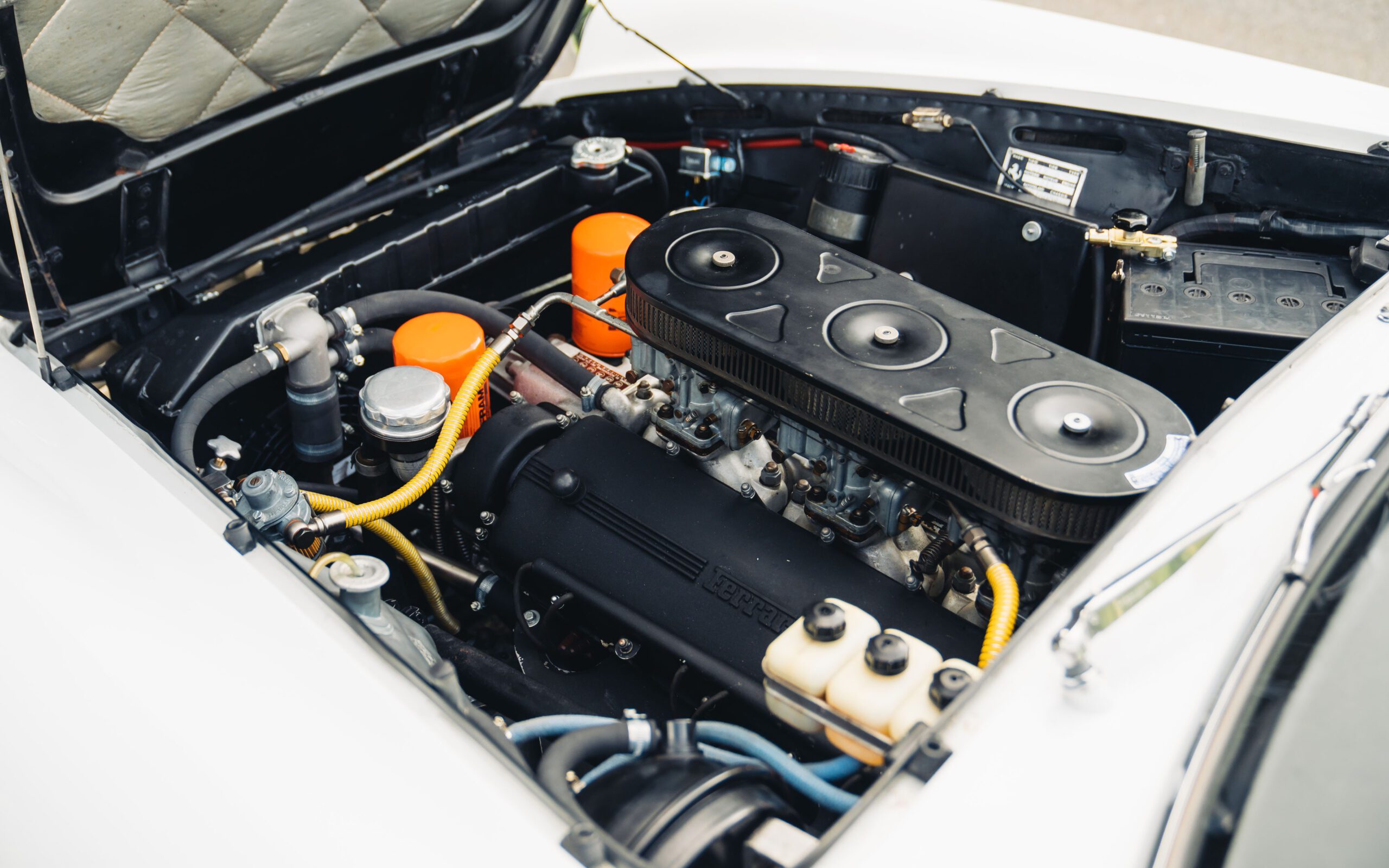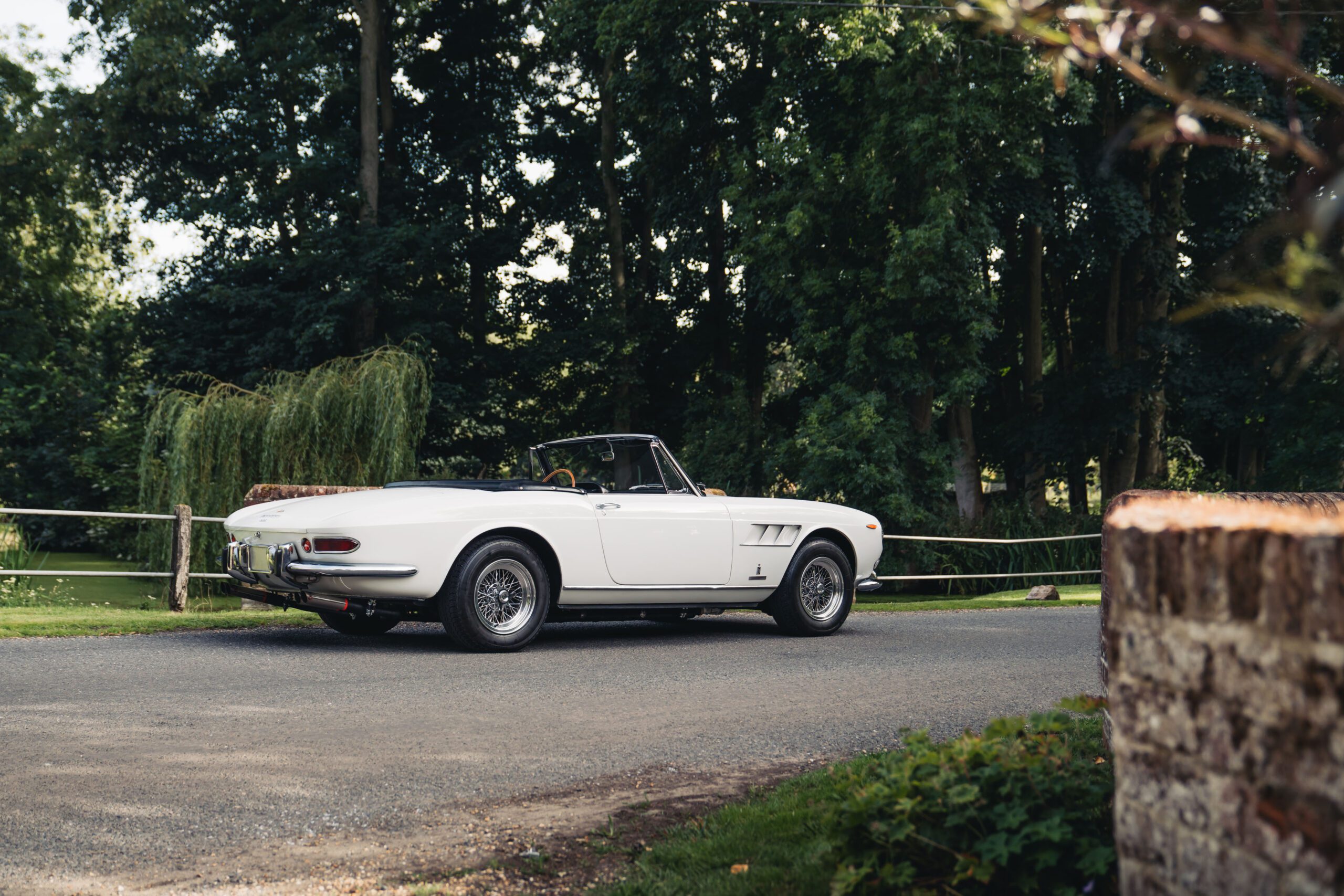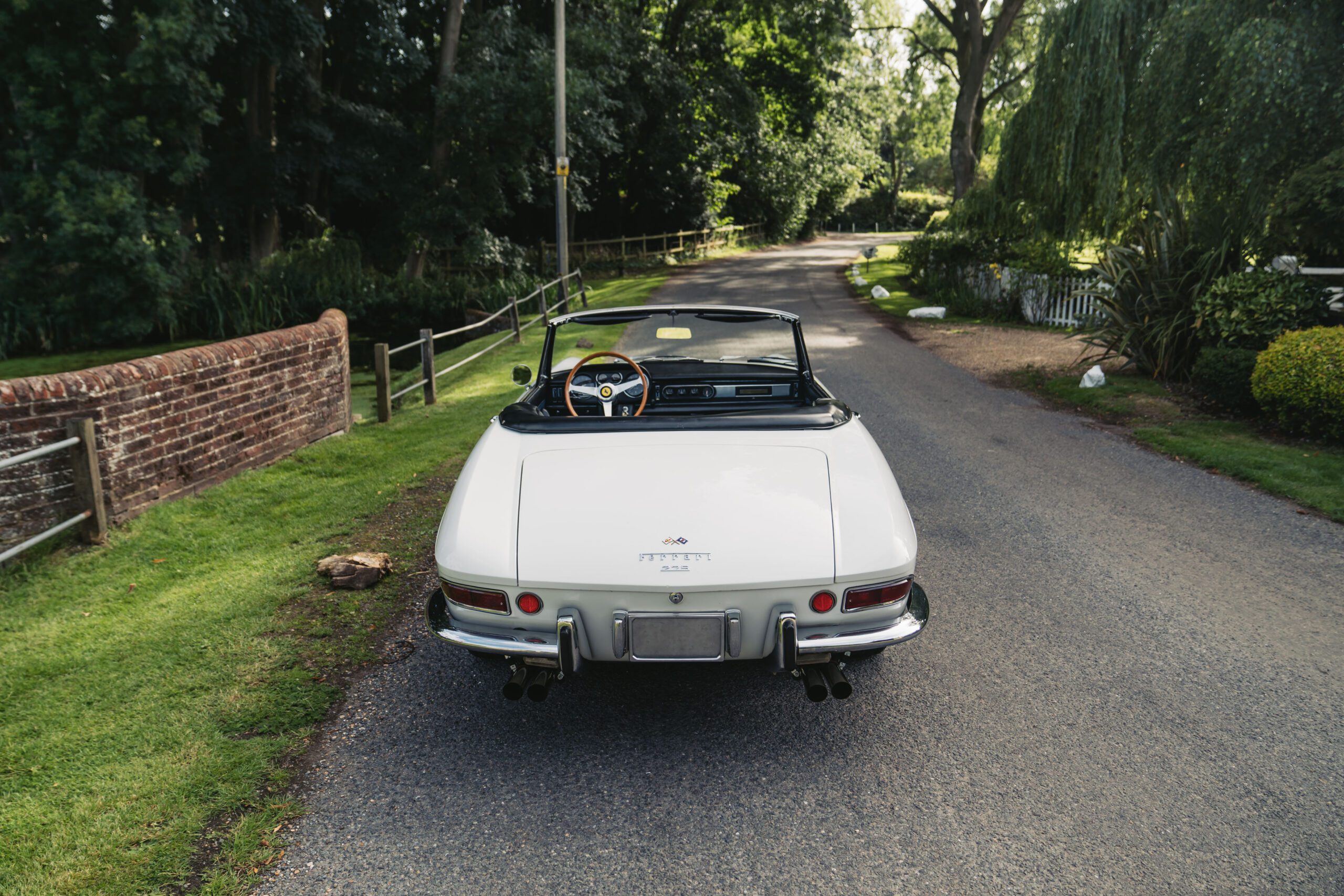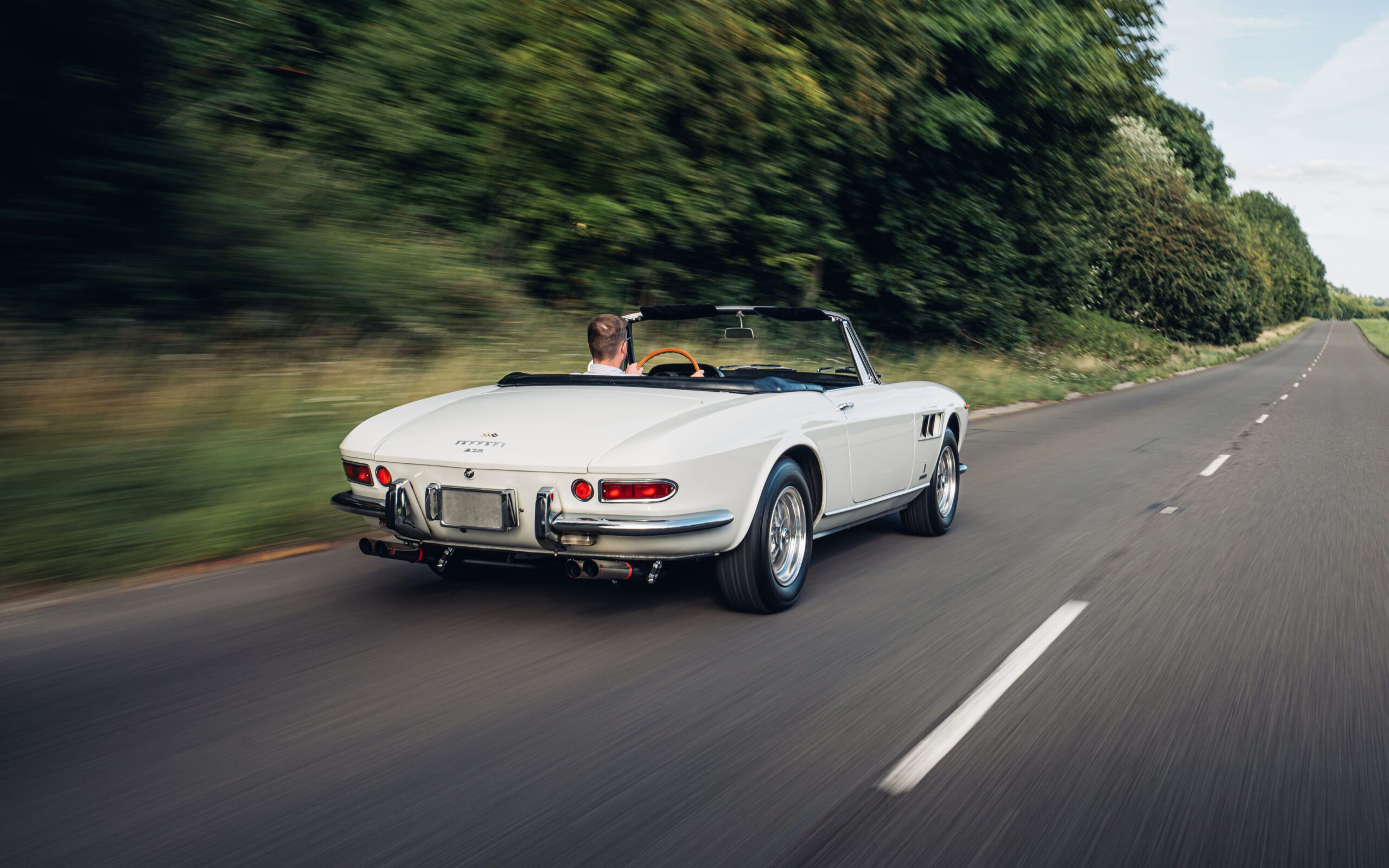Prior to the iconic “250” series, Ferrari offered open-top sports cars. However, it was Pininfarina’s designs on the 250 chassis that truly established the convertible as a permanent fixture in the Ferrari lineup.
The introduction of the “275” series in 1964 marked a shift towards more standardized designs, exemplified by the 275 GTS. This Pininfarina-crafted convertible continued the tradition of using the model number to denote engine displacement. In this case, the “275” indicated a 3.3-liter engine, an increase from the 3.0 liters of its predecessor. While powerful, the Colombo V12 engine in the 275 GTS produced slightly less horsepower (260bhp at 7,000rpm) compared to the 275 GTB.
Building on Ferrari’s established multi-tubular chassis design, the 275 GTS incorporated several significant advancements. For the first time in a Ferrari road car, independent rear suspension with a double wishbone and coil-spring setup (similar to the 250LM sports-racer) was introduced. Additionally, a rear-mounted five-speed transaxle with an all-synchromesh gearbox and differential improved weight distribution, a feature that became a hallmark of future front-engined Ferraris.
Produced from 1964 to 1966, the 275 GTS saw minimal changes beyond the early adoption of constant velocity joints for the prop shaft. While embracing luxury with spacious seats and a first-of-its-kind wood veneer dashboard, the 275 GTS never strayed from the exhilarating driving experience that Ferrari was known for.
Photos Source: RM Sotheby’s





